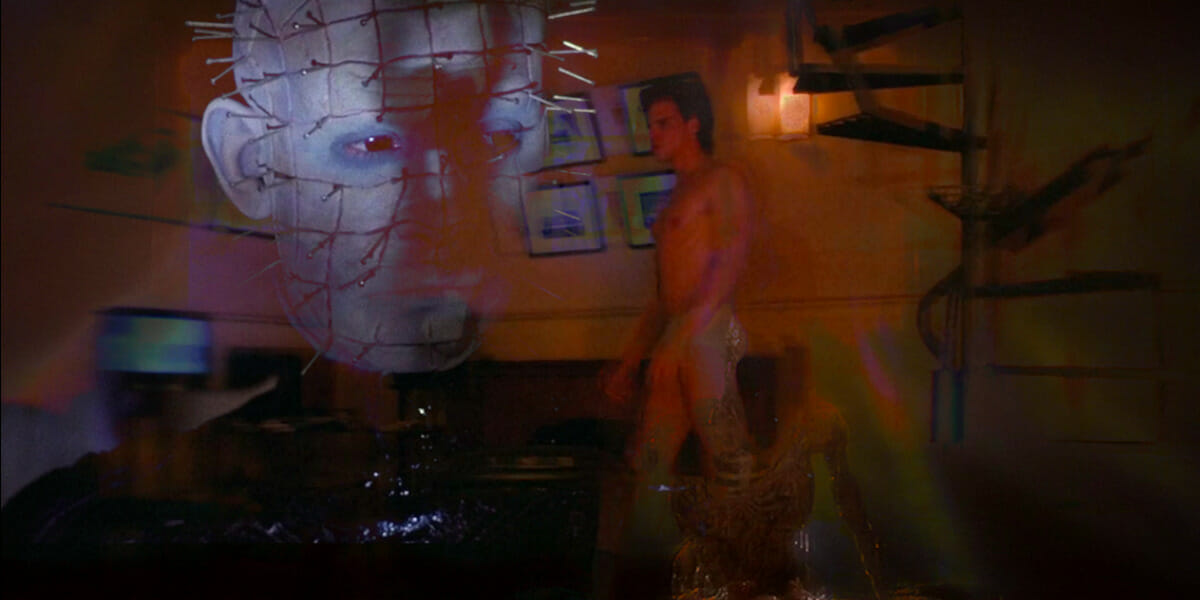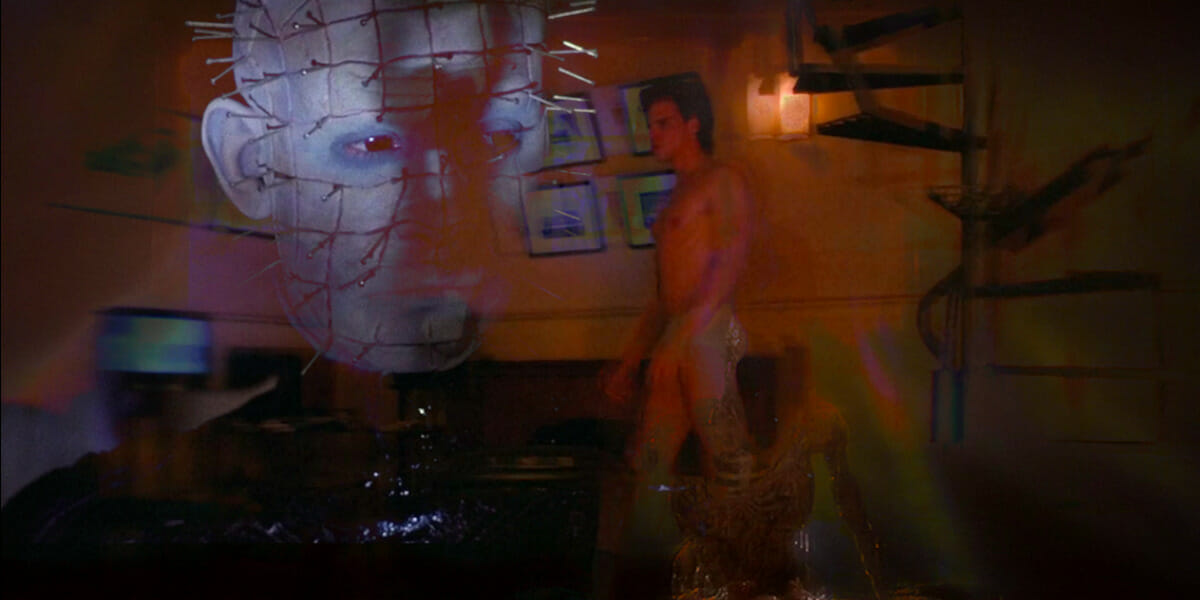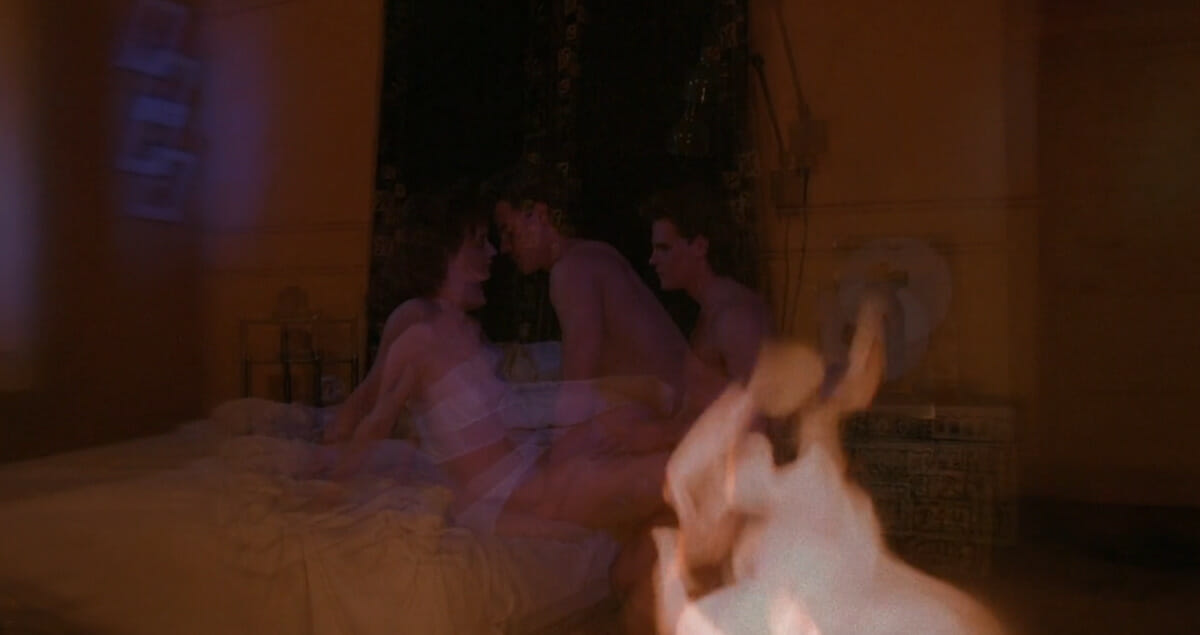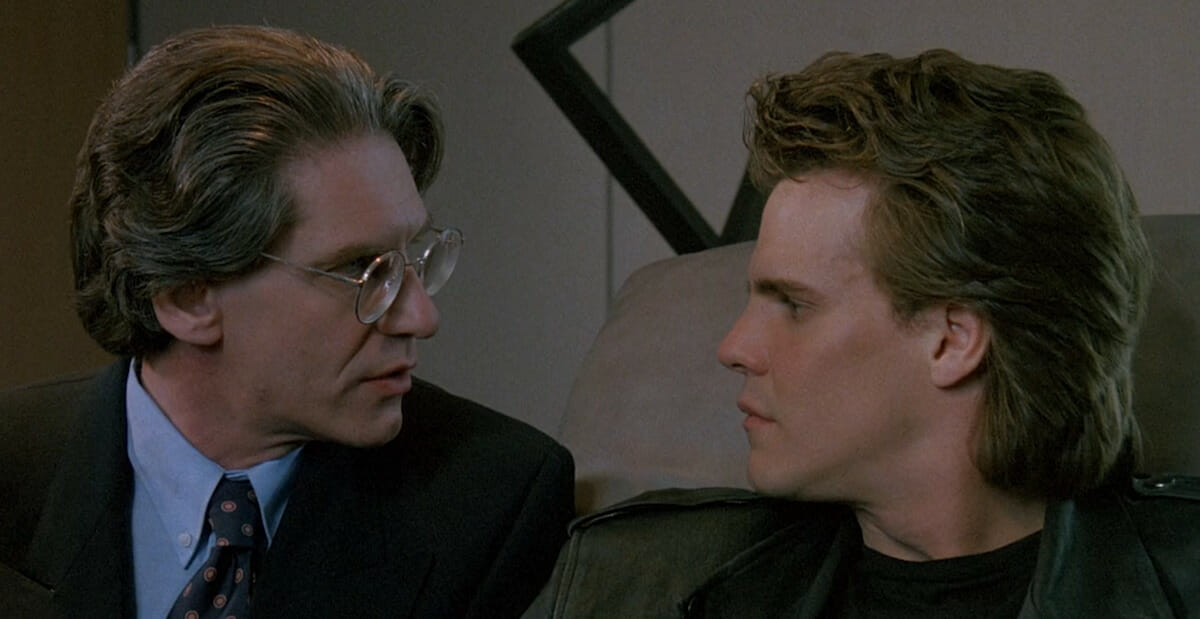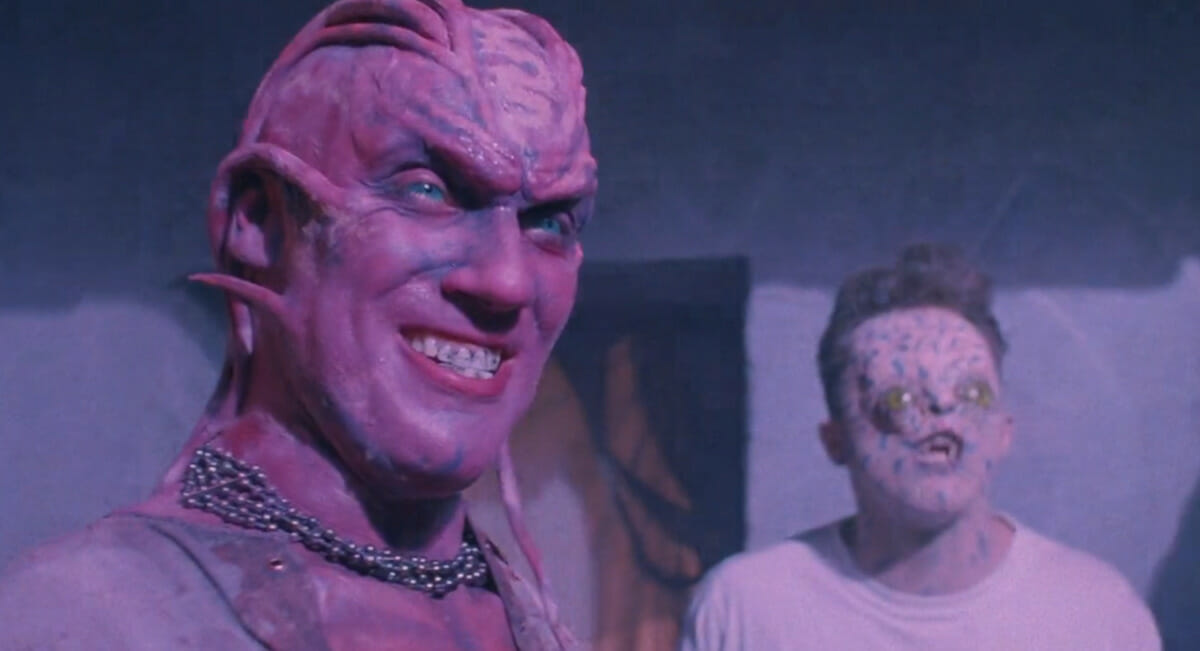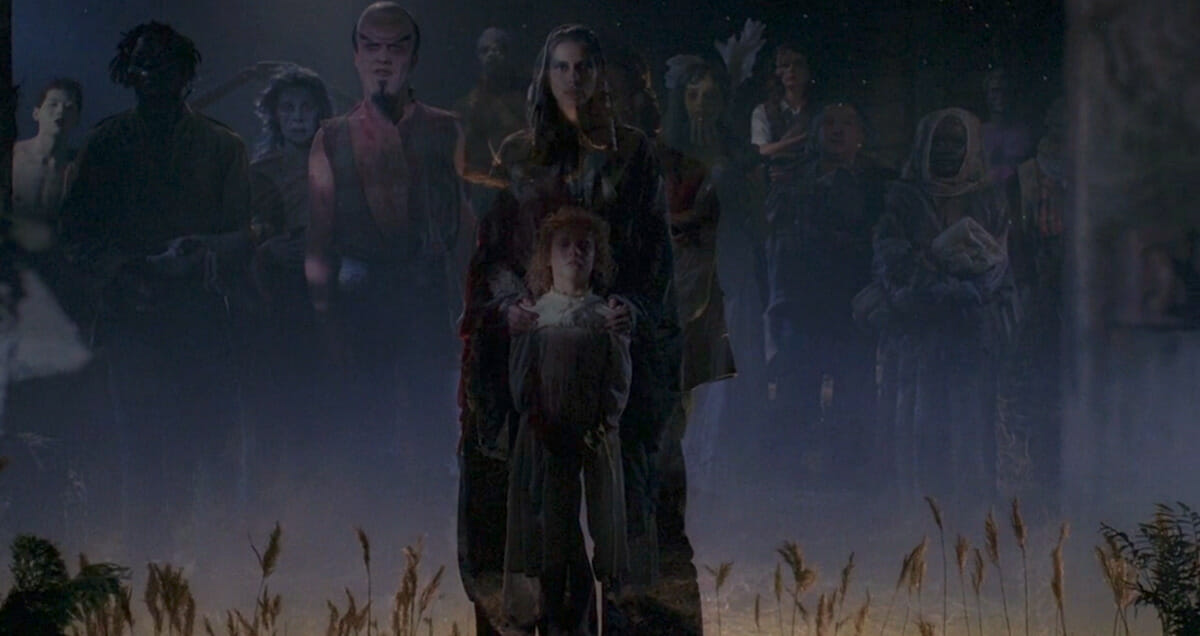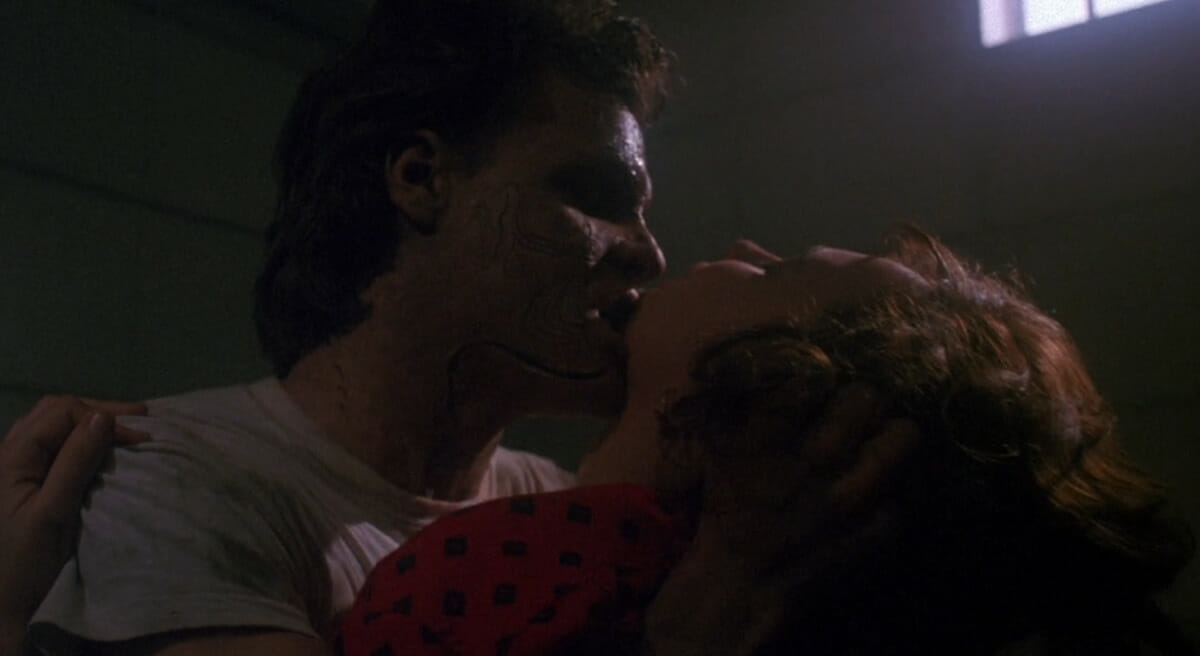It’s easier to assume that the figure at the centre of the posters and DVD covers for a horror film will be the villain; it’s why Freddy is on the cover of all the Nightmare on Elm Street films, why all of the Friday the 13th sequels feature Jason’s iconic hockey mask. But the films directed by Clive Barker, such as Hellraiser and Nightbreed, take a different approach. While the monsters are front-and-centre for the imagery surrounding this film — especially Pinhead, the lead Cenobite in Hellraiser — they aren’t the villains.
Barker isn’t primarily known as a filmmaker, but as an author. From his early short stories collected in The Books of Blood through to novels like The Hellbound Heart, Imajica, and Cabal, he’s gone on to become an influential author of horror and dark fantasy. His writing foregrounds the body in horrifying, wonderful ways, and often explored issues of queerness in horror before any other authors would (such as in short stories like ‘In the Hills, the Cities,’ and the novel Sacrament).
His directorial output is largely rooted in adapting his own work with Hellraiser made as an adaptation of The Hellbound Heart, and Nightbreed based on his novel Cabal. In many ways, Barker’s sensibility – gloriously gory body horror rooted in sexuality – is perfect for the silver screen.
His work, both written and cinematic, is obsessed with monsters; not for the evil that they represent, but for the evil in humanity that they’re able to reflect. Barker’s monsters shine a light on the problems and abuses that exist in traditional — heteronormative—power structures, using creates that exist beyond the confines of traditional humanity as a way of offering a kind of liberation.
Nightbreed is infamous for its troubled production, from the many cuts having been made to the film to the problems with how the film was promoted. In an introduction to the director’s cut — which remained unreleased until 2014, nearly 25 years after the films initial release — Barker says that the studio didn’t know how to market a film where the monsters are the good guys, leading to it being promoted as more of a straightforward slasher film, skipping over the subtext of queerness and liberation that animates so much of the film. Some of this seems to unwillingly come through in the theatrical posters for Nightbreed, featuring the tagline “Lori thought she knew everything about her boyfriend… Lori was wrong!”
While this may be a reference to the murder-mystery element of Nightbreed’, what it really feels like is an oblique hint at the movie’s queer subtext; that Lori’s boyfriend Aaron Boone is hiding some secret about his identity… which, in a way, he is. The central narrative arc of Nightbreed focuses on Aaron (Craig Sheffer), who has dreams about a city called Midian “where the monsters go.” Midian, it turns out, is real, and plenty of people want to be worthy of going there, because they’ve heard that it’s the kind of place where everyone will be forgiven, and where the pain is taken away. After being framed for a series of murders committed by his former psychiatrist, Phillip Decker (David Cronenberg), who’s also obsessed with the idea of Midian, Aaron is revived by the monsters of Midian and welcomed among their clan, the Nightbreed.
Though the inhabitants of Midian look like monsters; bloodstained skin; gills; one even resembles the Cenobites of Hellraiser, in reality they’re anything but monstrous. They hide from the surface world out of fear of persecution and death. When Lori (Anne Bobby) goes to Midian in search of the undead Aaron, she talks to one of the cities inhabitants about the way that they’re perceived, as “shapeshifters, freaks, the remnants of tribes that your kind led to extinction,” saying that humans envy these monsters, that they do what humans dream about—flying, changing shape, living forever —but what humans envy, they destroy.
This idea runs through a lot of superhero-tinged pop culture (the politics of X-Men as it relates to minorities and assimilation vs liberation, for example), but Barker challenges the norms of these narratives. The inhabitants of Midian aren’t heroes who aren’t trusted by normal people—they’re monsters, and their relationship with the surface world is one that’s defined by otherness.
For Barker, the idea of otherness is often something that’s queer with the structures he challenges often rooted in the patriarchal and heteronormative. Even with the ostensibly straight relationship between Aaron and Lori at the core of the film, Nightbreed remains a story about queerness. The way that the Breed are made other, and the importance of Midian as a place, feels uniquely queer. One monster says to Aaron, of Midian, “there’s no other place on earth that would take us.” A patient in hospital with Aaron before he’s killed is literally wearing the mask of a person over his monstrous face; so much of the narrative of the monsters is about hiding, either underground or in plain sight, knowing that revealing the truth is something that carries with it the danger of violence or death.
The climactic attack on Midian is what brings to the fore the ways in which Barker uses the monsters of Nightbreed as analogous with queer liberation. The police attack the underground city —even bringing a priest with them so they can enter “with God on [their] side” — and address the monsters with dehumanising language:“interrogate it,” and “they torched our car, lousy freaks.” Here is where the monsters fight back, where they’ve had enough of hiding, and riot against the police after the threat of having their home—their sanctuary—taken away from them.
It’s the decision to fight back that reads as liberation, with this final act of the narrative feels like a horror film riff on the Stonewall Riots —Barker taking the moment seen as one of the major turning points in queer liberation—when queers fought back against the police – using his monsters as a proxy for marginalised people. But for Barker, liberation comes after the uprising; the Breed continue to travel after losing their home. The monsters refuse to assimilate, and instead strike out on their own, newly empowered.
The monsters get their happy ending; the discovery— and destruction —of Midian by the humans feels like a kind of violent outing, with its inhabitants fighting for their place in the world. What’s important here isn’t just that the monsters are “the good guys”, but that the villains take the form of corrupt institutions —a doctor trying to frame a patient for crimes and a small-minded, trigger happy police force. The “other” here is simply a minority fighting simply for survival.
Hellraiser was a major turning point for Barker, not only as a filmmaker, but also in terms of his mainstream exposure. Released in 1987, Barker directed and wrote the adaptation from his own novella, with the film going on to make over $14 million from a $1 million budget, becoming a major hit and spawning a franchise that would gradually move further and further away from the ideas that are present in Barker’s original film, turning the Cenobites, and their leader Pinhead (Doug Bradley) from otherworldly beings into more traditional, slasher-style killers.
While even the original Hellraiser might not have the political allegory of Nightbreed, both films share a critical eye on traditional power structures. Pinhead and the Cenobites might be monsters but they aren’t really villains; their morality, aesthetics, and pleasures exist on a different level to the humans in the film. The real villain is Uncle Frank (Sean Chapman). Frank is violent and abusive; his vision of pleasure driven by having power over someone, even and especially, the power to hurt them. It’s this quest for pleasure that unleashes the Cenobites.
The Cenobites and the Breed share a distance from humanity; the former consider themselves to be “explorers from the farthest reaches of experience,” and their arrival to the world— bright white lights —feels almost angelic. They call themselves “demons to some, angels to others.”
Everything about the Cenobites is a challenge to the binaries that drive Frank—the distinction between pain and pleasure; between power and submission, even gender. While only one of them is credited as a Female Cenobite, their S&M-driven aesthetic and monstrous features makes a traditional marker of gender feel irrelevant. This is explored in greater detail in Barker’s Hellraiser comics where the figure of the Lead Cenobite (Pinhead in the film) is something that can change; power isn’t driven by maleness for the Cenobites in the way that it is for the humans in Hellraiser.
The male characters have a strange relationship with sex —either aggressively entitled or pathetically contrite; the idea of masculinity exposed as something fragile more so than toxic, as Barker uses his monsters to reveal the problems inherent with the ways in which the people in his worlds limit themselves to simple definitions of what it means to be a male, to be straight, or even to be human.
What it means to be a monster is vital to both Hellraiser and Nightbreed. Their relationship with people, and what it means to be liberated from them, informs so much of how the two films explore the importance of power —on both individual and institutional levels. Whether they’re Breed or Cenobites, it’s in embracing otherness, in all of its monstrosity, that these figures are able to find a kind of freedom. The priest who accompanies the police to Midian is called a “faggot” —it’s no wonder that he wants to see the city itself and, in the end, ends up becoming one of the breed. It reinforces the idea of Midian as a sanctuary for the persecuted. The priest’s transformation makes him want to hunt down the Breed; it reads as a kind of self-loathing, an attachment to the institutions that, now that his monstrous form has been revealed, would be just as likely to persecute him as it would any other member of the breed.
Even if these films don’t foreground queer relationships, their interrogation of ideas of sexuality, gender, and power is what makes them uniquely queer. Whether it’s the otherness of the Breed, or the toxicity of patriarchal power exposed by the Cenobites in Hellraiser. Barker’s exploration of queerness is driven by the idea of what it means to exist outside of the norm, and the narrative of Nightbreed moves in the direction of liberation exactly because of this. Barker’s monsters feel no need to assimilate with the wider world; in one way or another, humans would never be able to understand them. There are a few moments of sympathy for the monsters in Nightbreed —a tortured shopkeeper asks Decker “what did they ever do to you?”—but it’s the institutions of the world that are against them, and that, in the end, they feel the need to fight back against.
Barker’s prose also dives deep into the ideas of queerness as well, both mundane and monstrous, through lenses both everyday, and informed by the possibilities of horror fiction. His short story ‘In the Hills, the Cities’ was one of the first things that I remember reading that featured queer characters, and two men having sex. What was most striking about it—especially looking back, knowing how much of queer art is driven by narratives About Queerness and often coming out—was the fact that the queerness of the characters was simply incidental.
These were character who just happened to be gay, something that it seemed to take a long time for the mainstream to catch up with. ‘In the Hills, the Cities’ is one of the short stories in Barker’s Books of Blood anthology, several smaller short story collections brought together in one volume. These stories—like the novels that would come after them and serve as the source material for Hellraiser and Nightbreed —are obsessed with the fragility of both bodies and institutions.
The sexual deviance of Hellraiser is echoed in stories like ‘Jacqueline Ess: Her Will and Testament’ and ‘The Madonna,’ which explore the ways in which sex can change the body in ways both fascinating and horrifying. ‘Jacqueline Ess’ follows a suicidal housewife who discovers she has the power to change people’s bodies with her mind; what transpires is a story of obsession and deadly sexuality. ‘The Madonna’ also explores the ways in which sex and sexuality can bring about transformation in people, focusing on a sect of women who turn the men that they seduce into one of their own.
Our understanding of the body —of how and who we desire—isn’t fragile in Barker’s work so much as its fluid: for better or worse, the figures in his stories and films are often on the cusp of change, captured in the moment of becoming something else. That something else might be a monster, but this transformation has the possibility to offer a unique kind of freedom; an embrace of queerness, and rejection of uncaring institutions.
Barker’s monsters, from the Breed to the human hands in the story ‘The Body Politic’, always fight back. This is what liberation looks like for Barker: being able to fight back and finding your way out of a world that might be hostile towards you.
